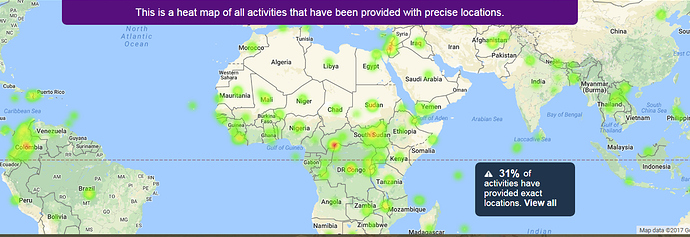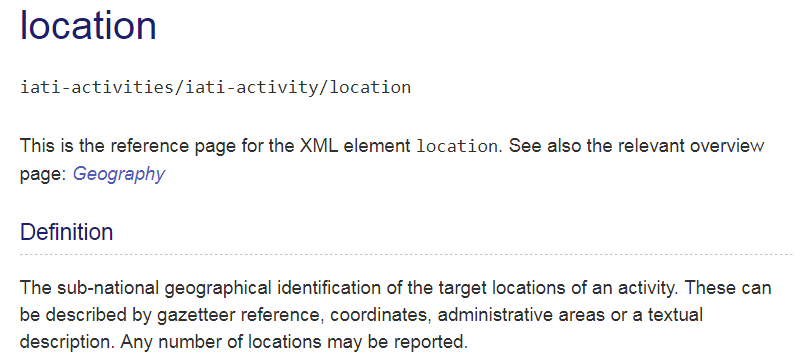A discussion took place on twitter in the wee hours of Friday night. It started with a d-portal map of UNDP activities
Jonathan van Geuns commented:
Hmm… “This is a heat map of all activities that have been provided with precise locations.”
And so it started:
Just realized that most of these are likely “heat maps” of a country’s centroid #FakeHeatMaps
Numbers in the centre of a country refer to national programmes. Others will have more refined coordinates
If truly national, surely a country code is suffice? A geocode only makes sense for a precise location (as stated). If implemented in one place but helps people nationally then geocode capital and use geographic location reach element?
Don’t you want to see all activities on a map?
Yes, but properly coded. If activity is in 1 place but impacts nationally, use geographic reach element. Central geocodes add nothing.
RE Sieber
A map is a meaningful communication medium only if the spatial distributions are meaningful. Bunch of centroids w fake hotspots? Not so much.
I believe the location standard is explicitly subnational, no?
Who wrote that? (Watch out for 2.04 proposals)
So how would you represent an activity of national scope alongside others with specific locations?
RE Sieber
Cartographically, you can’t do both on the same map. Either show choropleth or pointilize all: call national scope a capitol (bldg) activity
Could colour code difference between an activity w/ “actual location” and activity w/ “impact location”? TA projects being the former.
RE Sieber
It’s a feature dimension problem: points r 0D. If you really want 2D areas then you need to demand more x,ys. Long-standing prob w #IATI
- This is presentational, though. d-portal could choose to do it this way (or other ways) by deriving co-ords from recipient country(s).
- But adding spurious co-ords to data for presentational reasons seems objectively incorrect.
- Forces hand of presentational tools, & dilutes other data bc no way to tell which are accurate.
Do you honestly think that is a realistic, pragmatic solution?
RE Sieber
Realistic if IATI folks got together w GIS techs, who have lots of country & subnational boundary files. Maybe more users if data qual improved
I understand that impacts aren’t exact. But the all-areas-can-be-represented-by-centroids-and-we-can-lump-them-together isn’t working.
Perhaps standardising around administrative areas is a better option. But they do tend to change substantially over time …
RE Sieber
If that’s a problem, 1 option is to provide a GUI in schema for location: draw impact area on map. Another is bounding box



